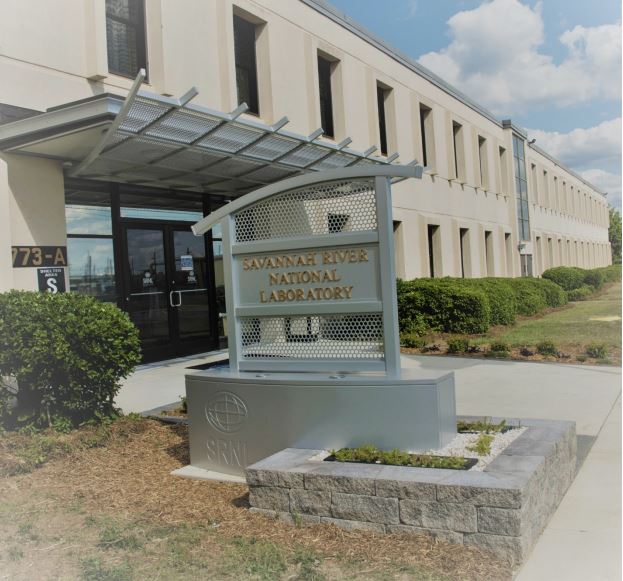ARPA-E Awards $3.8M to SRNL for Tritium Fuel Cycle Projects toImprove Energy Production
AIKEN, S.C. (Sept. 15, 2020) – Two SRNL proposals totaling $3.8M were selected in a competitive process by the Department of Energy’s Advanced Research Projects Agency-Energy (ARPA-E) for the development of transformational technology that will enable a sustainable fuel cycle for commercial fusion reactors.
Creating a viable fuel cycle for fusion is an unprecedented challenge, as it requires handling of large amounts of tritium, a radioactive isotope of hydrogen that only naturally exists in miniscule quantities. SRNL is applying its vast expertise working with tritium to improve the reactor power production process, making fusion reactors more efficient.
The first project, led by Dr. George Larsen at SRNL, is a collaborative effort with Clemson University and the University of South Carolina. It takes on the challenge of moving tritium gas at high flows through the fusion plant using vacuum pumps. Currently, the vacuum technology needed to operate a compact fusion power plant does not exist.
“The conventional wisdom is that you can’t use any type of oil when pumping tritium,” said Dr. Larsen. “It’s is a problem because pretty much every pump used in industry requires some kind of oil.”
Dr. Larsen determined that existing vacuum technology could be adapted to meet the challenges posed by fusion energy, but a radically new pump oil treatment and recycling system would be required, allowing vacuum pump technology to work for tritium usage at a large scale.
“We’re challenging convention, a bit, here,” said Dr. Larsen. “But, by designing the pumping fluid and recycling system in an integrated manner, we can achieve a holistic and innovative solution for fusion power plants.”
The three-year project, if successful, will meet ARPA-E’s targets for a fusion power plant and reduce pump operational costs at fusion facilities from an estimated $14.5M a year to $103,000 a year. It would also reduce pump electric power consumption from an estimated 2.8 megawatts to 0.25 megawatts annually, a 10-times reduction of energy use. This process has the added benefit of also reducing inprocess tritium fuel inventory from an estimated 2.03 kilograms to 0.48 kilograms, conserving the use of tritium.
The second project, led by Dr. Brenda Garcia Diaz, was awarded to SRNL for $1.5M and focuses on the portion of the fuel cycle known as breeding, where the fusion power plant will generate its own tritium fuel through the interaction of neutrons with lithium.
Currently, there is no established way to extract tritium from lithium containing breeding material once it is produced. Dr. Garcia Diaz has developed a process that harnesses technology originally developed for lithium ion batteries to do just that.
“This process allows the reaction to be performed in existing process vessels such as the breeding material buffer tank and reduces the footprint of the entire tritium extraction system,” said Dr. GarciaDiaz. “It offers a process that eliminates the need for centrifugal contactors and molten salts, decreasing the need for expensive mechanical parts and gas clean up stages.”
This process intensification has the potential to reduce tritium extraction costs from $1,500 a gram to $0.04 a gram and diminish the facility footprint required from 55,000 square feet to slightly more than 100 square feet. The three-year project will scale up the process from the demonstrated proof-of concept to an intermediate scale, demonstrating viability for further fusion-relevant application.
“These projects show a great deal of promise in improving reactor technology and financial savings by finding efficiencies in materials and processes,” said SRNL Laboratory Director Dr. Vahid Majidi. “We’re excited about how they can benefit fusion technology in both the public and private sector.”
The projects were awarded funding by ARPA-E’s Galvanizing Advances in Market-Aligned Fusion for an Overabundance of Watts (GAMWOW) program. GAMWOW projects work in synergy with publicly and privately funded fusion-development efforts, including ARPA-E’s ALPHA and BETHE fusion programs, and will leverage the technical resources and basic research SC-FES sponsors in these areas. ARPA-E and SCFES will jointly fund the projects over the program’s three-year lifespan.

SRNL Scientists awarded two DOE ARPA-E proposals totaling $3.8M for development of transformational technology enabling a sustainable fuel cycle for commercial fusion reactors
###
Media contact: SRNL Media Relations